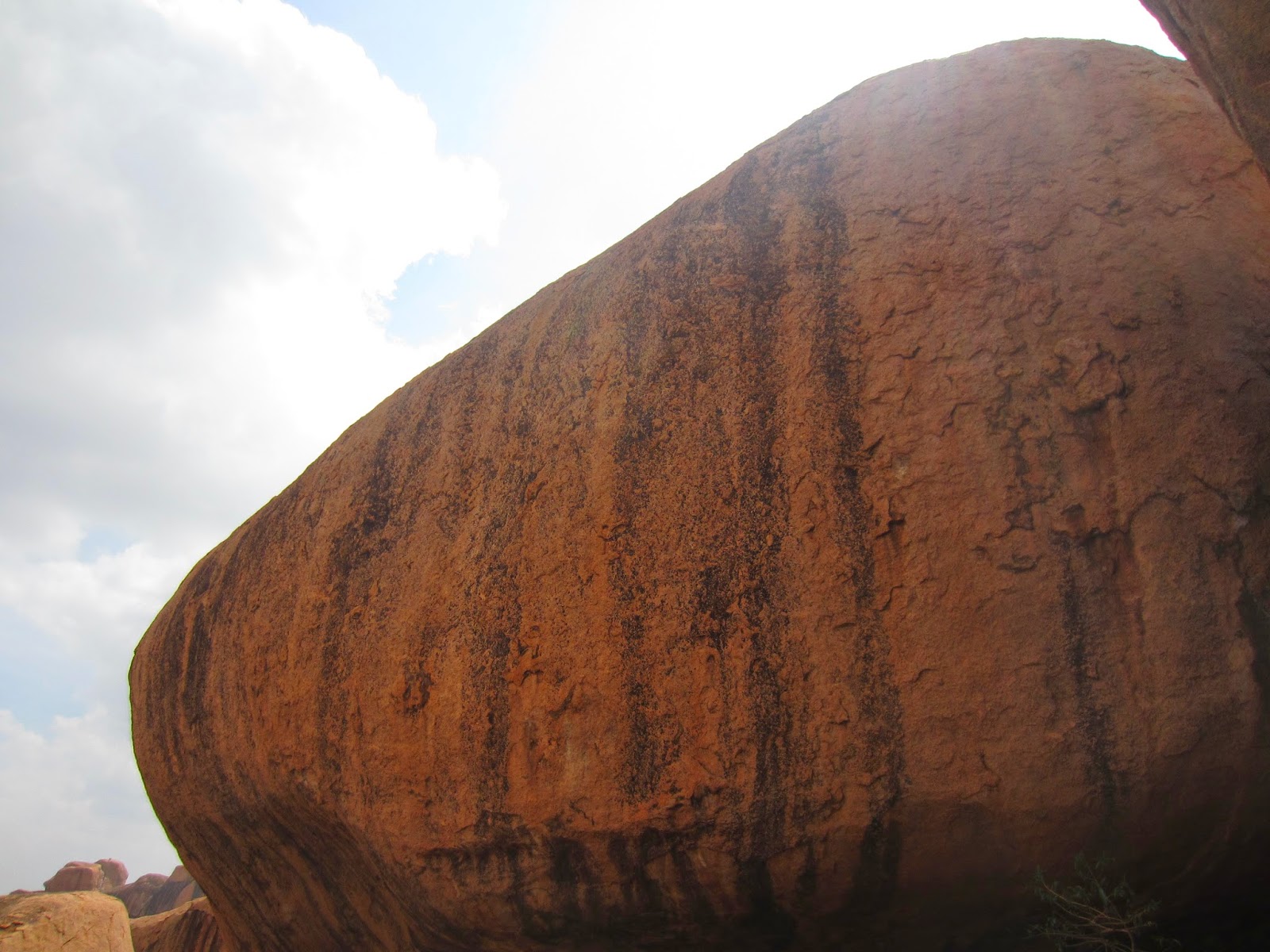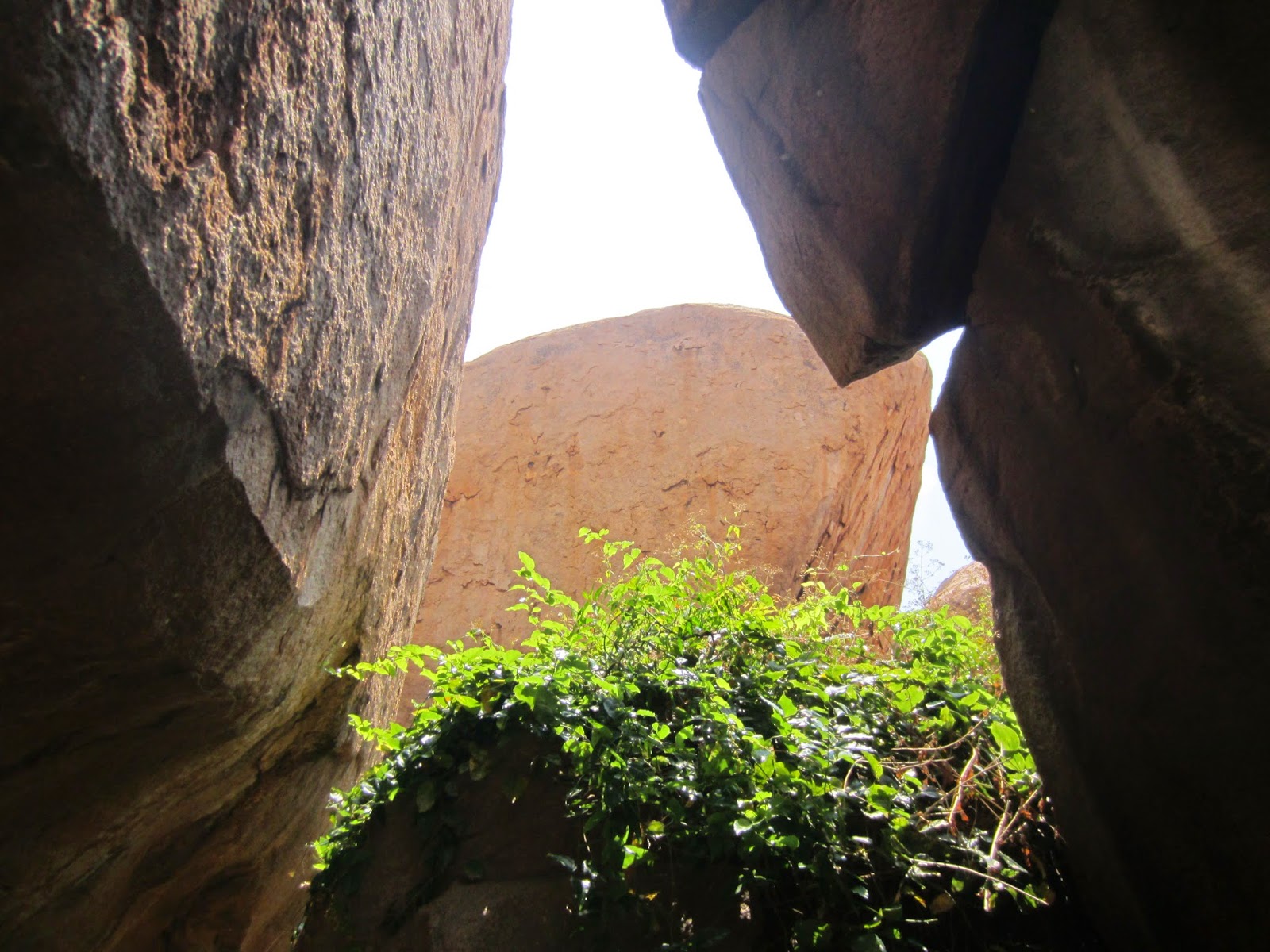‘Baobab’ – an old African settler in Tuticorin?!
When I had been in Tuticorin few years back, I stumbled upon an outlandishly massive tree in a local school.
Curiosity drove me to visit this tree again when I
have been to there recently.
for relative comparison of the size ...
It seems a branch in this part is damaged... .
It is a single tree with multiple branches....
The sheer colossal trunk is roughly five times the
size of the massive Thirumalai Nayakkar Mahal pillars.
A school teacher informed me its scientific name as
‘Adansonia digitata’ and he was not aware of the common name.
He also informed the tree’s age as ‘350 years’.
Since the school’s age is less than that, the origin
history of the tree is not known!
Did some search in the net and found that ‘baobab
tree’ as the common name of this tree.
It is also known by many other local names in it's motherland, Africa.
‘Upside-down tree’ is one such name as it looks so.
But the school kids said to be calling it ghost tree.
But the school kids said to be calling it ghost tree.
The peculiar baobab tree has few other spectacular variants in Africa.
It is said to be high in medicinal and nutritious value.
I have read about a fascinating description of baobab trees felled and used to divert River Nile's course in Wilbur Smith’s ‘The
seventh Scroll’.
Since Tuticorin is a harbour town and one of the
settlements of the British during the colonial time it is a possibility that this
particular tree might have been brought in to Tuticorin by sea as a sapling.
Annual rings of grown up baobab is said to be not
clearly decipherable.
Whether carbon dating or any other methods are
possible in the case of a tree?
Whether he (she?) has any companions nearby?
But I have'nt heard about the presence of a baobab tree anywhere else in Tamilnadu!
But I have'nt heard about the presence of a baobab tree anywhere else in Tamilnadu!
Gigantic baobab tree with its imposing presence would usually define a landscape like the impressive canopies of an Indian Banyan tree!
‘Keelur’ or the Eastern part of Tuticorin is the old part of this port town.
‘Keelur’ or the Eastern part of Tuticorin is the old part of this port town.
Keelur has few vestiges of colonial era
such as the Buckle’s canal – now reduced to a mere sewage, the vintage Custom
House building on the Beach Road which belongs to 1901 – documented as one of
the heritage pieces of the Indian Customs, few commercial buildings on and
around Beach Road with the colonial flavour of Indo-saracenic style and few antique houses with old fashioned elevations at Bungalow Street.
The Great Cotton Roads in Keelur still reminds the ways
through which the black cotton bales were brought in to the old port from the unique hinterland
black soil fields and exported to British mill towns during the British Raj – one
of the factors feeding the Industrial revolution.
May be the baobab tree is worth enough to be enlisted as one such heritage symbol of this port town!
This baobab tree is in the campus of 'Saraswathi Anglo Vernacular School' known as 'SAV School' in Chatram Street near the '2nd (Railway) Gate' in 'Melur' part of the town.
This school was founded in 1852!
This school was founded in 1852!
***
.jpg)
.jpg)
.jpg)

.jpg)
.jpg)

.jpg)
.jpg)
.jpg)
.jpg)
.jpg)
.jpg)
.jpg)
.jpg)
.jpg)

.jpg)

.jpg)
.jpg)
.jpg)

.jpg)
















.jpg)
.jpg)
.jpg)

.jpg)












